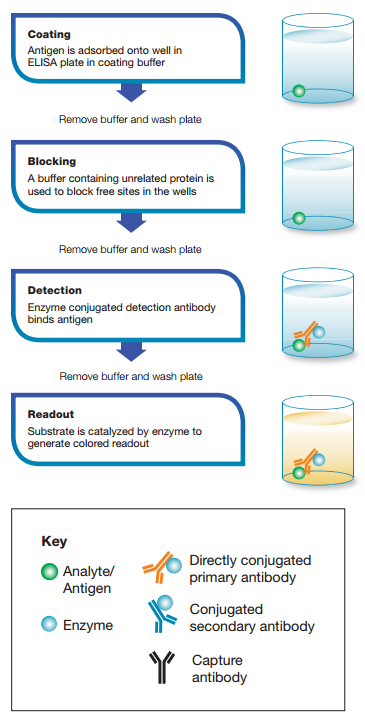ELISA: Procedure

- On This Page
- Overview
- ELISA steps
Overview
ELISAs begin with a coating step, where the first layer, either an antigen or an antibody, is adsorbed to a well in an ELISA plate. Coating is followed by blocking and detection steps as shown in the simple schematic diagram below.
Since the assay uses surface binding for separation, several washes are repeated between each ELISA step to remove unbound materials. During this process it is essential that excess liquid is removed in order to prevent the dilution of the solutions added in the next stage. For greatest consistency specialized plate washers are used.
ELISAs can be quite complex, including various intervening steps and the ability to measure protein concentrations in heterogeneous samples such as blood. The most complex and varying step in the overall process is detection, where multiple layers of antibodies can be used to amplify signal.
ELISA Steps




